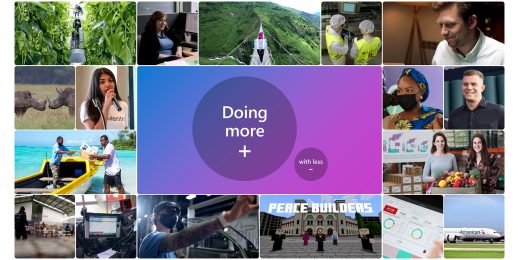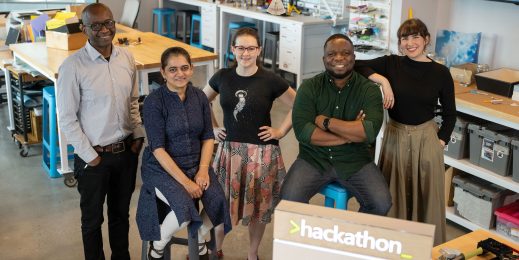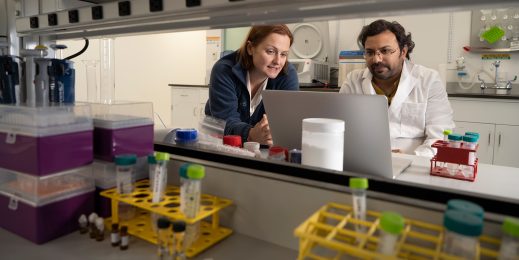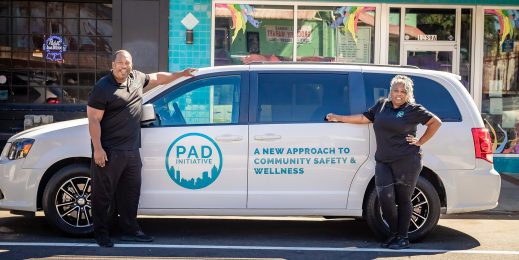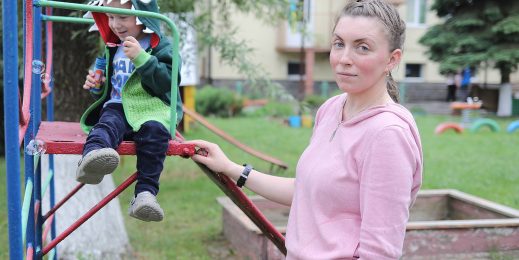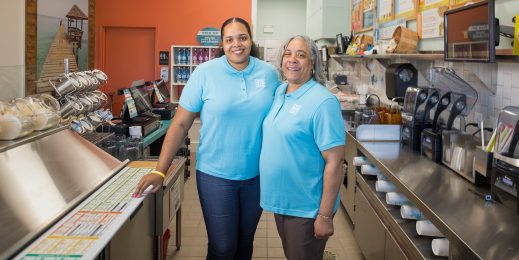
Tech Talent for Good: New volunteer program matches Microsoft employees’ tech expertise with nonprofit IT needs
Graham sits atop a horse and rides him. Slowly. Deliberately. The little boy, born with cerebral palsy, has a huge grin on his face. This is more than just about a pony ride, though: This is about Graham getting better.
A few years ago, Graham’s parents couldn’t have imagined such a scene. Muscular atrophy is a part of cerebral palsy, and their son was facing a huge challenge when it came to walking. With the equine therapy he has had at Little Bit Therapeutic Riding Center in Redmond, Washington, Graham can now walk independently, says Cluny McCaffrey, the center’s deputy director.
Little Bit’s gentle horses are the draw for the 230 children and adults who come there. Behind the scenes, the nonprofit organization relies on an army of more than 350 volunteers, including Microsoft employees, who do everything from helping riders, to grooming and tacking horses, to filling water buckets and cleaning stalls.
Now, a new Microsoft program, Tech Talent for Good, will encourage employees to use their technical expertise to help nonprofit organizations like Little Bit, which often lack adequate staff, technology training and knowledge, do more and achieve more in their programs.
“Tech Talent for Good turns this challenge into an opportunity to match Microsoft’s greatest asset, which is the technical talent of our people, with nonprofit organizations that are seeking to address society’s greatest needs,” says Lori Forte Harnick, Microsoft general manager for Citizenship and Public Affairs.
Even nonprofit organizations that have an IT director or a technical person on staff “often don’t have the time or expertise to leverage technology in ways that will improve their operations and services to the fullest extent possible,” Harnick adds.
“This is going to be huge for us, because, chances are, we would never have the resources to hire that level of expertise to apply to our program, to apply to our problems; it’s currently well out of our range,” agrees McCaffrey. “It’s an incredibly generous and beneficial opportunity for us.”
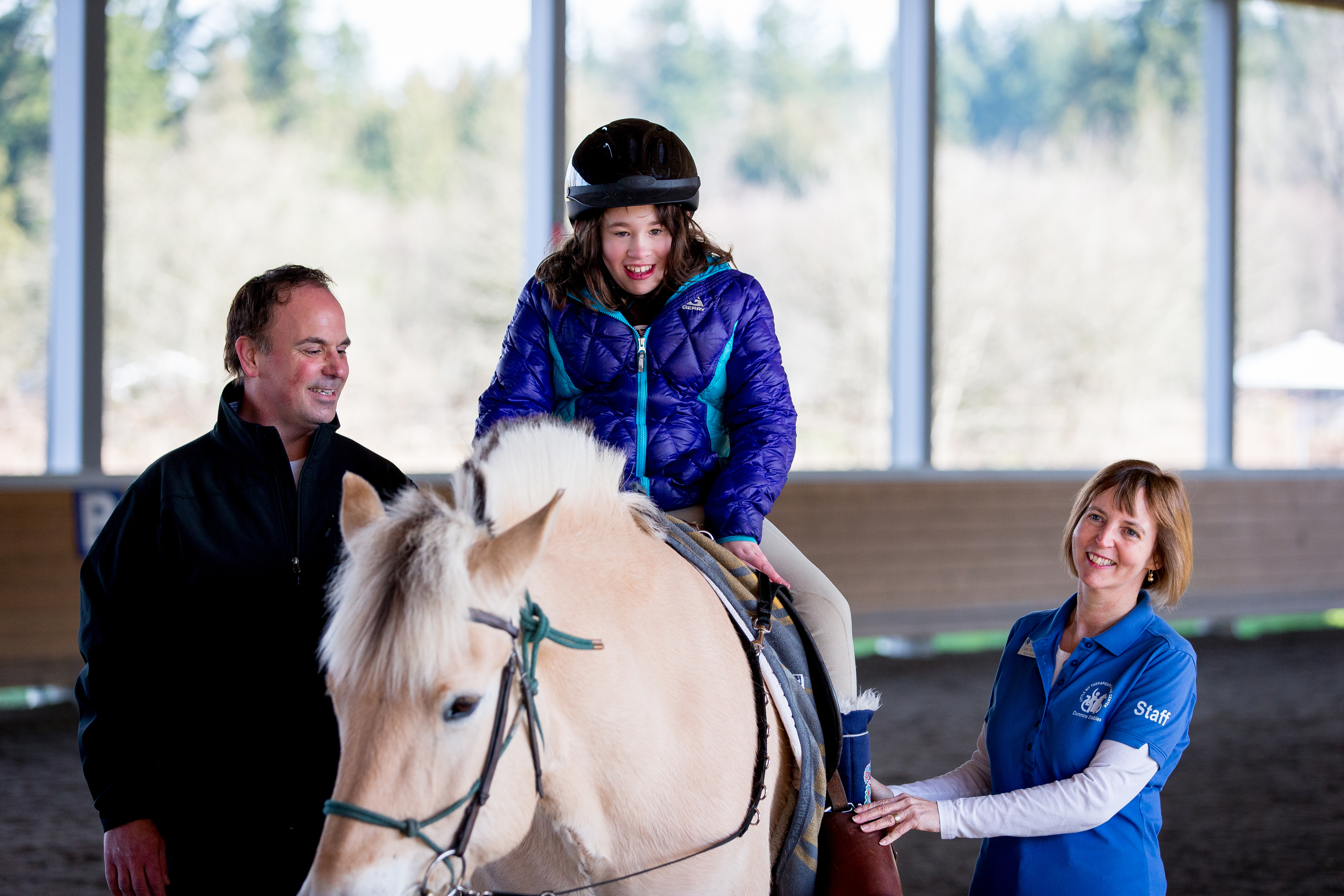
Tech Talent for Good is part of Microsoft’s Giving Campaign, which last year raised a record $117 million for nearly 20,000 nonprofits and schools around the world.
For the initial rollout, Tech Talent for Good will work with a varied portfolio of nonprofit organizations in Washington state that represent “a broad range of causes, from hunger to youth unemployment to health and human services,” Harnick says.
“That means that our employees can choose the project they want to work on based on the cause it addresses or the service it provides to the community,” she says.
Within the initial roster of nonprofit organizations, there’s a wide range of technical projects that need to be done, from technology strategy planning, to data mapping, to deploying productivity tools, to website development, and more. “Employees also can choose the project they want to work on based on a nonprofit’s technical needs,” Harnick says.
Yet another bonus for nonprofits: For every hour of time a Microsoft employee gives to a nonprofit through Tech Talent for Good, Microsoft will donate $25 an hour in cash to that nonprofit.
Ask McCaffrey what the organization needs in the way of tech help, and you get an immediate, one-word answer: “Everything!”
“Our IT systems are not very sophisticated,” she says. “And as an organization, we’ve grown a lot in the last few years. It’s absolutely imperative that our IT catches up with us, which is not easy at a nonprofit. We don’t have anybody on staff with that skill set.”

Little Bit’s clients have a wide range of disabilities, from cerebral palsy to autism. “We don’t focus on their disability, we focus on their ability and on expanding how they move, and how they live in the world,” McCaffrey says.
McCaffrey says over the years Little Bit has collected, “a tremendous amount of data ― we do a lot of tracking of our horses and of our clients ― but the data mostly lives in random Excel files. We don’t have much of an ability to analyze that data and use it to inform decisions. So we’re really missing out.”
Right now, she says, “If somebody asks for information or data, you don’t necessarily know where it is, and if it’s going to take time to find it. When you get it, you don’t know what format it’s going to be in. There haven’t been any prescribed protocols ― everything has been done independently by different people.”
Jeff Gollnick, a Microsoft employee who has volunteered at Little Bit for more than two years, and is on the board of directors, says organizing Little Bit’s data and then migrating it to the cloud are top priorities.
“I’ve been struggling to figure out how to get hands-on help for all the IT challenges that Little Bit has,” says Gollnick, a content publishing manager for Microsoft’s Cloud and Enterprise group.
“How do I get the right expertise, and more importantly, how is that expertise sustainable over time for Little Bit?” Tech Talent for Good will help address those issues, he says.

Year Up Puget Sound, another of the nonprofits in the first phase of Tech Talent for Good, helps low-income young adults, ages 18 to 24, who are looking to better their lives by preparing themselves for jobs in help desk support and in software testing.
Students in the year-long program spend the first half of it in classes learning about everything from computer programs to corporate culture, and the other half in an internship. The nationwide program opened to students in the Puget Sound area in 2011.
“We have students ranging from those who have never really touched a computer before, all the way to students who are close to certification and are very familiar with technology,” says Cheryl Ingram, Year Up Puget Sound’s academic director. “We have students who are single parents, who are homeless, who dropped out of college because they could no longer afford it.”
They all share certain traits, though: drive, motivation and grit, she says.
“If they’re interested in technology, they want to know the possibilities of where they can go. The grit that they have and the hard work that they do is usually what gets them through the program,” says Ingram.
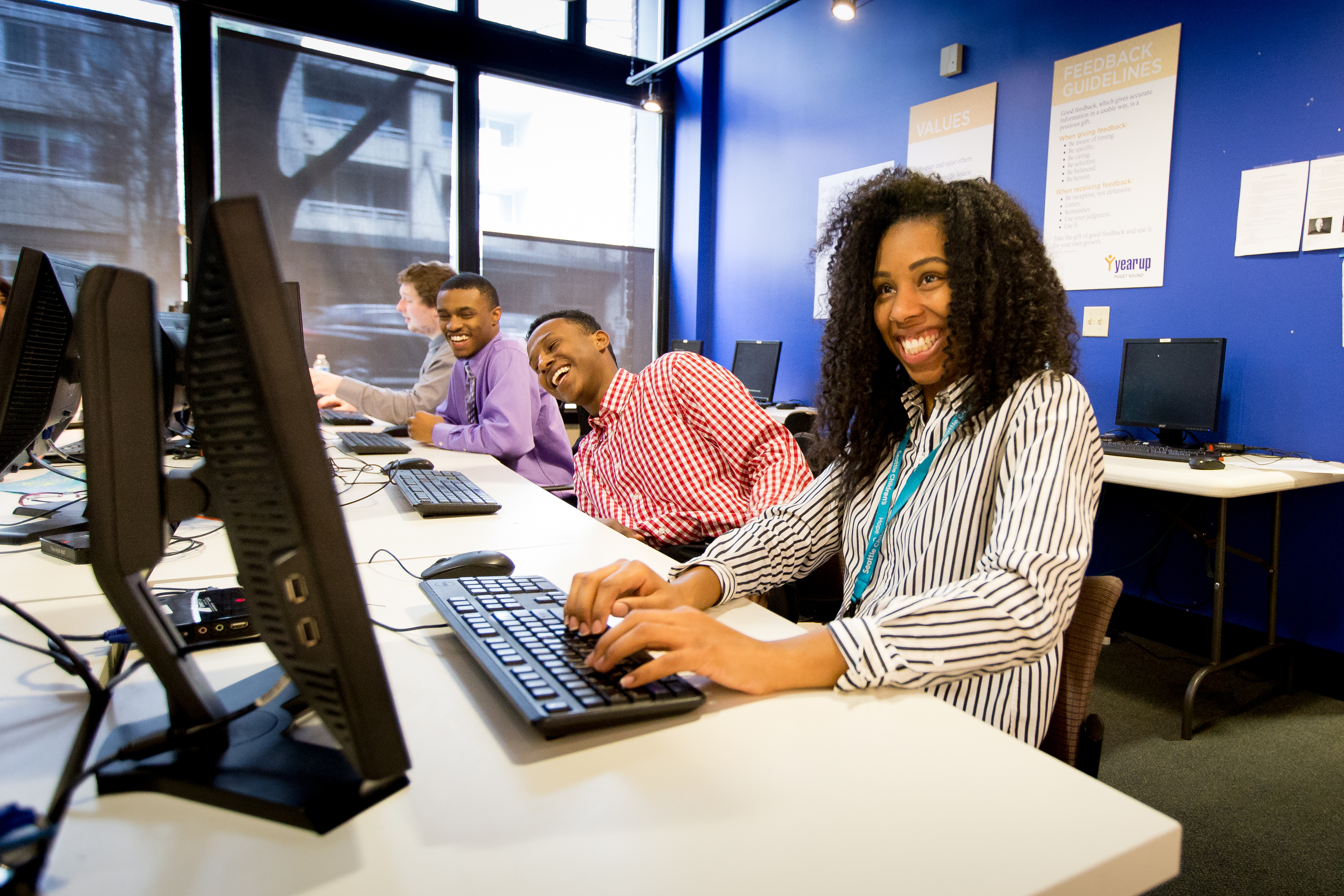
Eighty students enter the program every six months, and some of them become interns and even employees at Microsoft and other area tech companies.
Fred Krug, Year Up Puget Sound’s senior director of corporate partnerships, says he hopes volunteers from Tech Talent for Good will help Year Up answer some important questions: “How can technology help us scale the number of students, from serving 2,000 people a year to 10,000 a year over the next five years? How can technology help us be more efficient and have the same amazing outcome as we scale up?”
Gollnick says many nonprofits face the same problems as Year Up and Little Bit when it comes to technical expertise. “People come out and they do pro bono work ― but then they’re gone. So there’s no sort of continuity to it. Someone hacks together a solution, and people who come in after the fact can’t really figure out what they did or why they did it, especially when it quits working over time as things modernize.”
That’s why, he says, Tech Talent for Good “is an awesome way to give back, and give where the sweet spot of your talent is. It’s a great way of matching Microsoft talent with the needs out there.”
Read Kathleen Hogan and Brad Smith’s post about the program on The Official Microsoft Blog. You can learn more about Graham and other “superheroes” of the Little Bit Therapeutic Riding Center by watching this video.
Photo credits: Scott Eklund/Red Box Pictures. Pictured in lead image, Jeff Gollnick, left, and fellow volunteers, Lynne Davison, in the red jacket, and Corey Dugan-Barrett walk along with client Sadie at Little Bit Therapeutic Riding Center in Redmond.





